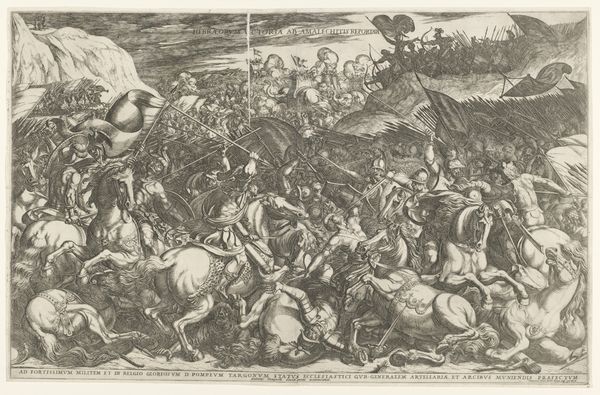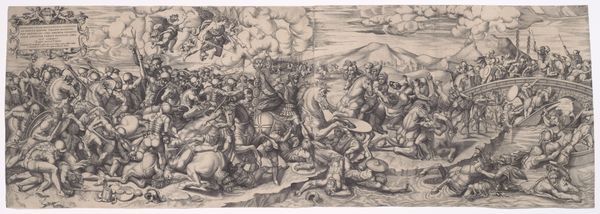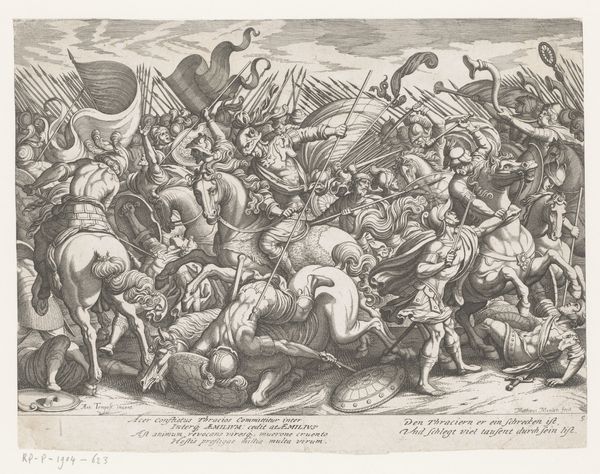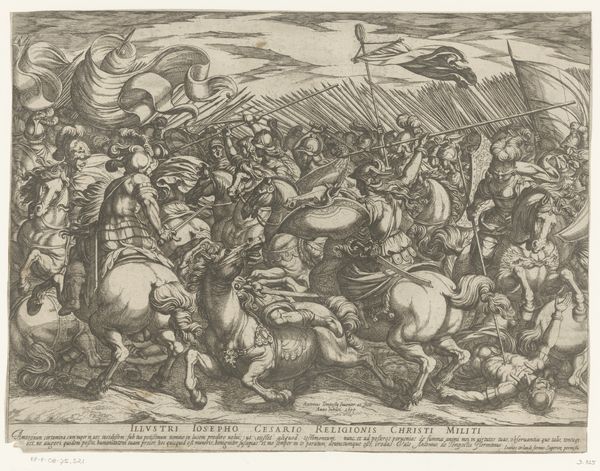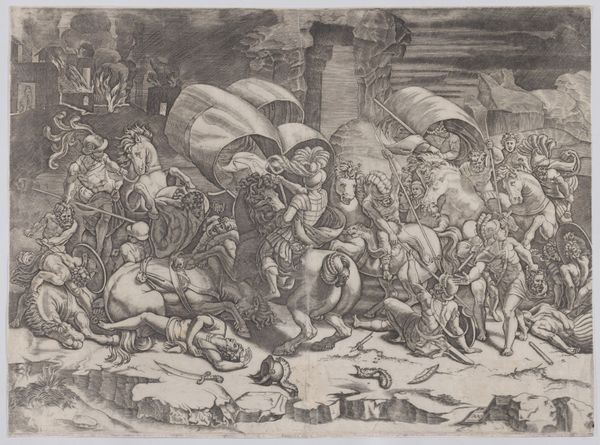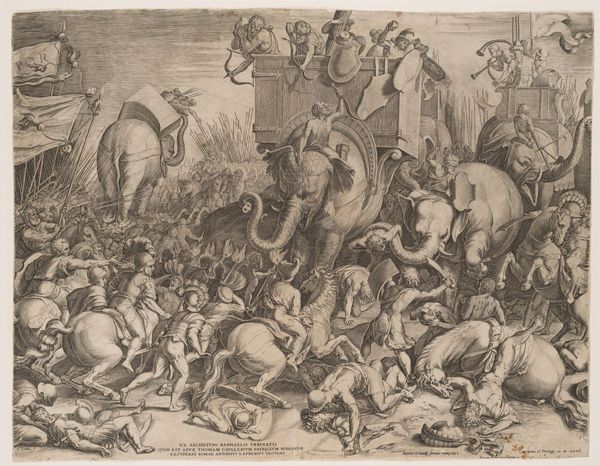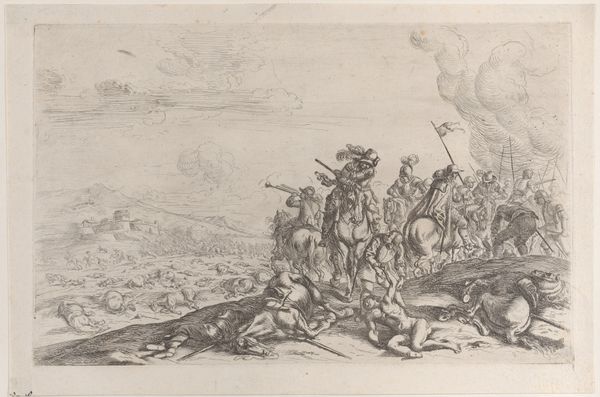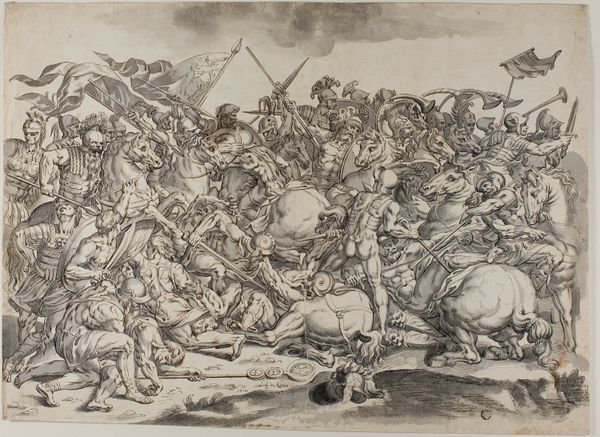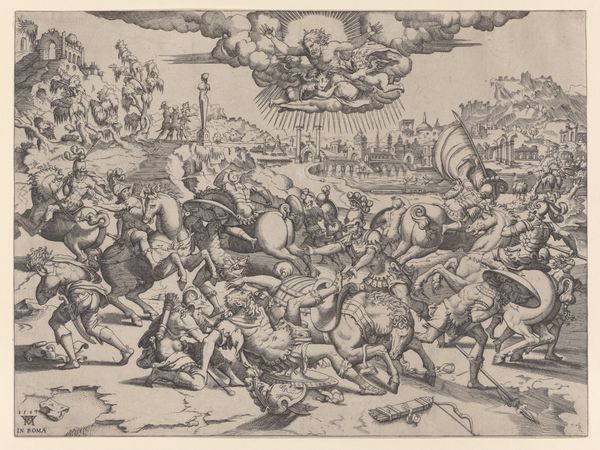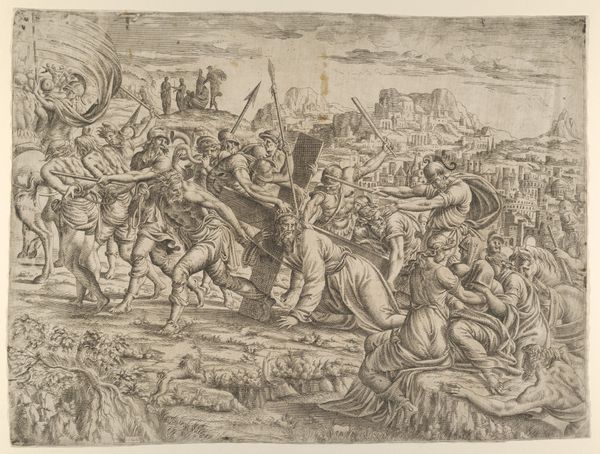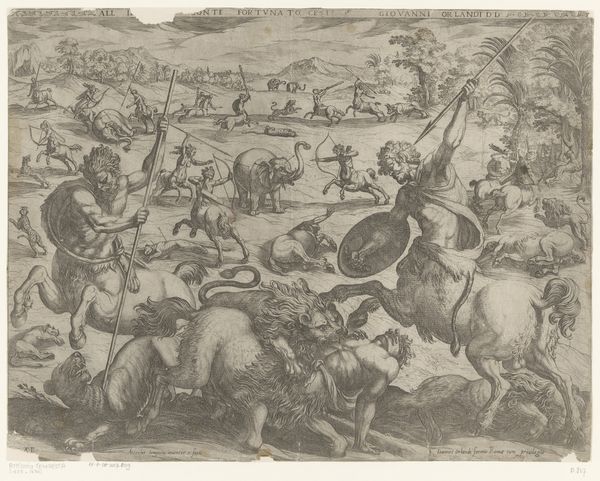
Constantine defeating the tyrant Maxentius, angels carrying swords fly above 1544
0:00
0:00
drawing, print, engraving
#
drawing
#
narrative-art
# print
#
landscape
#
figuration
#
11_renaissance
#
soldier
#
pen-ink sketch
#
horse
#
history-painting
#
italian-renaissance
#
engraving
#
angel
Dimensions: Sheet: 14 11/16 × 17 1/2 in. (37.3 × 44.5 cm)
Copyright: Public Domain
Editor: This is "Constantine defeating the tyrant Maxentius, angels carrying swords fly above," a 1544 engraving by Giulio Bonasone, currently housed at the Metropolitan Museum of Art. It strikes me as a swirling, chaotic scene, rendered with incredible detail for a print. What historical narratives or societal implications do you see in this piece? Curator: Well, on one level it shows the victory of Constantine over Maxentius. More importantly, this battle carries an immense amount of symbolic weight tied to the politics of the time. Think about what Constantine's victory represented. Editor: I know Constantine was the first Christian emperor. Is that what makes this scene historically important? Curator: Precisely! The angelic figures carrying swords highlight divine endorsement of Constantine's rule, shaping its reception. Images like this one played a crucial role in consolidating power and crafting the narrative of a divinely sanctioned leader, justifying political actions and reinforcing social order through persuasive imagery. Editor: So, the print isn't just documenting a battle; it's actively participating in the construction of a political ideology? Curator: Exactly! How do you see the composition contributing to this sense of divinely ordained victory? Is it all Constantine's strategy? Editor: Well, it certainly isn't, is it? He's centrally placed but look! Angels are literally intervening with their weapons of heaven. Curator: Precisely! The placement suggests an orchestrated and divinely approved power structure with strong influence on viewers then and there. It's something to consider even today when engaging with art produced under powerful authority. Editor: I never thought about prints being tools of propaganda during the Renaissance! This conversation has completely transformed how I understand Bonasone’s work. Curator: It is about more than an artwork, more like peeking behind the scene in order to better engage with our history and society today!
Comments
No comments
Be the first to comment and join the conversation on the ultimate creative platform.

